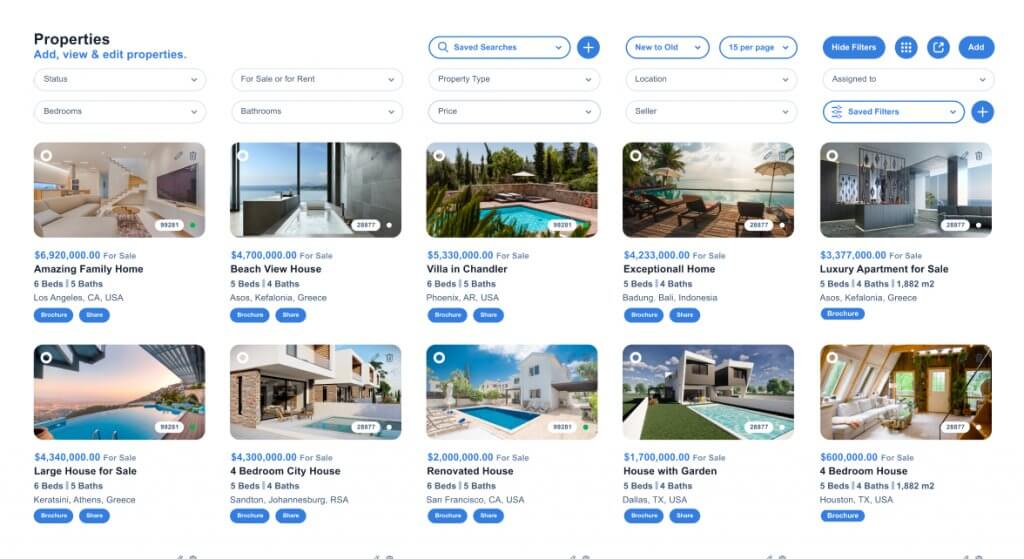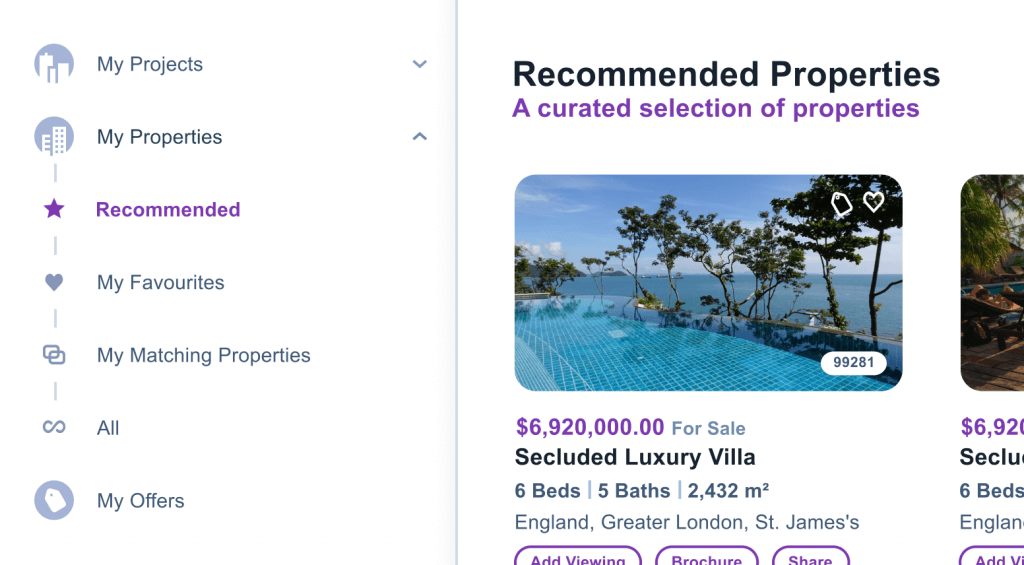Training your team to use a real estate CRM is crucial. CRM software can be a powerful tool for streamlining your business processes and managing leads & contacts. Additionally, conversion rates can rise by up to 300% using CRM. However, implementing a CRM system is only half the battle – you also need to ensure that your team knows how to use it effectively. Here are some tips for training your team to use your real estate CRM.
Table of Contents
- Set clear expectations
- Provide hands-on training
- Offer ongoing support
- Focus on key features
- Make it a team effort
- Measure progress
- Conclusion
Set clear expectations
Setting clear expectations is a critical aspect of real estate CRM training. It is essential to ensure that everyone on your team understands the purpose of the CRM system you are implementing. This will help to ensure that they are motivated to learn and use the system effectively.
- Explain the purpose of the CRM system: Clearly explain why you are implementing a CRM. What benefits will it provide to your team and the organization? For instance, you could mention how the system can help to automate routine tasks, improve communication, and enhance customer experience.
- Outline the expected outcomes: Define what you hope to achieve with the CRM system. This could include increasing lead conversion rates, reducing response times, or improving customer satisfaction. Additionally, make sure that your team understands these objectives. This will help to motivate them to learn and use the system.
- Define the expected usage: Clearly outline how the CRM system will be used. What data needs to be entered? Ask how frequently it needs to be updated. Provide specific examples to help your team understand the process, such as how to log calls, schedule appointments, and track customer interactions.
- Clarify roles and responsibilities: Define each team member’s role and responsibility in using the system. This includes who is responsible for entering data, updating records, and monitoring system usage. Ensure that each team member understands their specific tasks and how they contribute to the overall success of the system.
- Set training expectations: Clearly outline the training process, including how long it will take. Define what resources will be provided, and what is expected of each team member during the training period. Encourage questions and feedback to ensure that everyone feels comfortable with the new system.
Setting clear expectations is critical to successful real estate CRM training. Ensure that everyone on your team understands the objectives. This will keep them motivated and equipped to use it effectively.
Provide hands-on training
The best way to learn how to use a CRM system is to use it. Hands-on training is an essential aspect of real estate CRM training. It allows your team to gain practical experience using the system and learn how to navigate its features effectively.
- Customize the training to your team’s needs: Before you start training, assess your team’s skill level. Once you do, customize the training to their needs. For instance, if you have team members who are tech-savvy, they may need less training than those who are not. Similarly, if your team has different roles, you may need to customize the training to their specific needs.
- Provide access to the CRM system: Once the team has access, they can explore it on their own. Encourage them to experiment with the features and functions to get comfortable with the system. This will help them become familiar with the system’s capabilities and how it can benefit their work.
- Use role-playing scenarios: Consider setting up role-playing scenarios. Additionally, setting up mock sales calls can help your team get comfortable with the system. This will allow them to practice using the CRM in a simulated environment. This will help build confidence in their ability to use it effectively.
- Provide ongoing support: Real estate CRM systems can be complex. It is common for users to have questions or need help as they begin to use it. Therefore, provide ongoing support to your team as they start using the system. This can include providing a help desk, FAQs, or an internal knowledge base.
- Encourage feedback: Encourage your team to provide feedback on the training and the CRM system. Ask for suggestions on how to improve the training and the system. Doing this will ensure that it meets their needs and helps them be more productive.
Providing hands-on training is an effective way to ensure that your team is comfortable with the real estate CRM system. By customizing the training, providing access to the system, using role-playing scenarios, providing ongoing support, and encouraging feedback, you can help your team learn how to use the system effectively and improve their productivity.
Offer ongoing support
Real estate CRM training does not end after the initial training sessions. Once your team begins to use the CRM system in their daily work, they will have questions, encounter issues, or need help using the system effectively. Therefore, providing ongoing support is critical as they continue to use the system and derive its benefits.
- Provide access to online resources: Provide your team with access to online resources, such as tutorials, FAQs, or user manuals. This will help them find answers to their questions quickly and enable them to resolve issues without interrupting their work.
- Offer additional training sessions: Consider offering additional training sessions, especially if you notice that some team members are struggling to use the system effectively. These training sessions can focus on specific topics, such as advanced features, customization options, or integration with other tools.
- Assign a dedicated support person: Assign a dedicated support person who can answer questions and troubleshoot issues. Provide guidance as needed. Moreover, this person should be knowledgeable about the system and understand your team’s specific needs and challenges.
- Monitor system usage: Monitor the CRM system’s usage to identify potential issues or areas for improvement. For instance, if you notice that team members are not using specific features, you may need to provide additional training. Pinpoint features by highlighting their benefits.
- Encourage feedback: Encourage your team to provide feedback on the system’s performance, ease of use, and features. This feedback will help you identify areas for improvement. Moreover, it will ensure that the system meets your team’s needs.
Offering ongoing support is essential to ensure that your team uses the real estate CRM system effectively. By providing access to online resources, offering additional training sessions, assigning a dedicated support person, monitoring system usage, and encouraging feedback, you can help your team overcome any challenges and continue to derive the system’s benefits.
Focus on key features
Real estate CRM systems are designed to streamline and automate various tasks, but they can be complex and overwhelming for new users. Therefore, it’s essential to focus on the key features that will have the most significant impact on your team’s productivity and sales.
- Identify your business processes: Identifying your business processes will help you determine which features of the CRM system are most critical for your team to learn.
- Prioritize features: These could include lead management, pipeline tracking, and reporting. What’s more, focusing on the features that will have the most significant impact on your team’s ability, will generate and close deals.
- Customize the training: This will help ensure that your team understands how to use the essential features of the CRM system effectively.
- Use real-world examples: Use real-world examples and scenarios to illustrate how the essential features of the CRM system work in practice. This will help your team understand how to use the system to solve real-world challenges they encounter in their work.
- Reinforce learning: Provide opportunities for your team to practice using the essential features. This can include role-playing scenarios, mock sales calls, or hands-on exercises.
Focusing on the key features of your real estate CRM system during the training is essential to ensure that your team can use it effectively. By identifying your team’s business processes, prioritizing features, customizing the training, using real-world examples, and reinforcing learning, you can help your team understand how to use the essential features of the system to improve their productivity and sales performance.
Make it a team effort
Implementing a real estate CRM system is not just an individual effort; it requires a team effort. Every member of your team should participate in the training process to ensure that they understand how to use it effectively.
- Encourage collaboration: Encourage collaboration and knowledge sharing among team members during the training process. This can help team members learn from each other and understand how the system fits into the team’s overall processes.
- Hold peer-to-peer training sessions: Consider setting up peer-to-peer training sessions where team members can share their experiences and best practices for using the CRM system. This can be especially effective if you have team members who have different roles or work in different areas of the business.
- Assign “power users”: Identify team members who have a good understanding of the system and assign them as “power users.” These power users can help others learn the system and answer questions during and after the training.
- Conduct group training sessions: Conduct group training sessions where team members can learn together and ask questions in a supportive environment. Furthermore, group training sessions can help foster team cohesion and create a shared understanding of the system’s benefits and how to use it effectively.
- Provide incentives: Provide incentives for team members who learn the system quickly or provide valuable insights or best practices during the training process. This can help motivate team members to engage with the system and encourage participation in the training process.
Making the CRM training process a team effort can help ensure that every member of your team understands how to use the system effectively. By encouraging collaboration, holding peer-to-peer training sessions, assigning power users, conducting group training sessions, and providing incentives, you can create a supportive and effective learning environment that benefits your entire team.
Measure progress
Measuring progress is a critical step in ensuring the success of your real estate CRM system. In addition, by tracking the impact of the system on your business and team, you can identify areas for improvement, adjust your approach, and optimize the system’s usage.
- Define key performance indicators (KPIs): Define KPIs that are relevant to your business and team, such as the number of leads generated, conversion rates, or sales revenue. Use these metrics to track progress over time and evaluate the system’s impact.
- Set goals: Set specific goals for your team to achieve using the CRM system, such as increasing lead conversion rates or shortening the sales cycle. Use these goals to measure progress and identify areas for improvement.
- Collect feedback: Collect feedback from your team on their experience using the CRM system. Ask for suggestions for improvement and use this feedback to identify areas for additional training or support.
- Monitor usage: Monitor usage of the CRM system to ensure that team members are using it effectively. Identify team members who are not using the system as intended and provide additional training and support as needed.
- Analyze data: Use the data collected by the CRM system to analyze trends and patterns. This can help you identify areas for improvement, such as identifying bottlenecks in your sales process or areas where leads are dropping off.
- Make adjustments: Use the information gathered to make necessary adjustments to your business processes, training approach, or system usage. This can help you optimize the system’s benefits and ensure its long-term success.
By measuring progress, you can track the impact of the CRM system on your business and team. This serves to identify areas for improvement. Furthermore, if you use KPIs, set goals, collect feedback, monitor usage, analyze data, and make adjustments to optimize the system’s usage, your team will see benefits.
Conclusion
Following these tips will help you ensure that you fully train and prepare your team to use your real estate CRM system to its full potential. With a well-trained team and a powerful CRM system in place, you can streamline your business processes, manage leads and contacts more effectively, and increase sales and revenue.




